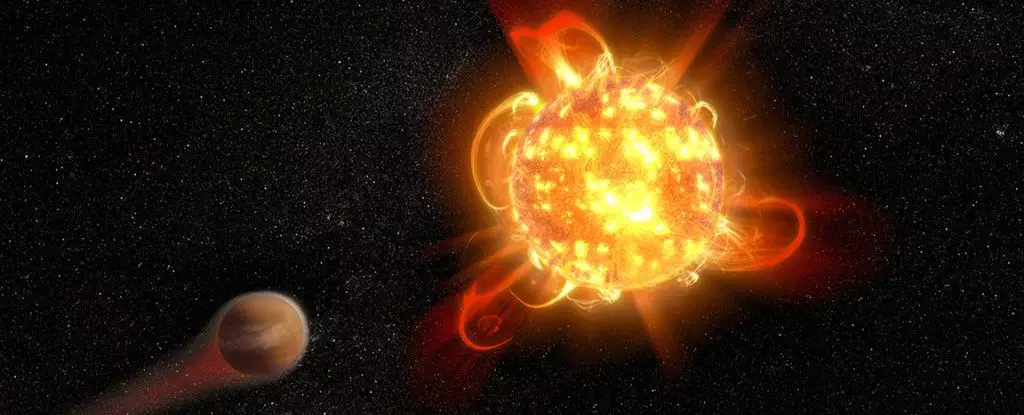M-class stars, commonly referred to as red dwarfs, constitute a significant portion of the universe’s stellar population. These stars, known for their small size and cooler temperatures compared to the Sun, are fascinating not only because of their abundance—accounting for approximately 70% of the celestial entities in our Milky Way—but also due to their long lifespans, potentially extending into trillions of years. This seemingly benign nature has led to discussions regarding their capacity to harbor rocky planets within their habitable zones, which could potentially host life. However, beneath the surface of this appealing premise lies a critical assessment that raises concerns about the viability of life in these star systems.
While red dwarfs have a reputation for stability, they paradoxically exhibit a proclivity for frequent and intense stellar flares. These violent outbursts release vast amounts of energy, leading to a surge of radiation. In an era where the search for extraterrestrial life is increasingly prioritized, scientists have begun to reevaluate the implications of these stellar flares on the habitability of surrounding planets. Recent research findings, based on extensive data from the now-retired GALEX space telescope, suggest that these flares could present significantly higher radiation threats than previously understood.
The concern is not merely theoretical. Flares emit a range of electromagnetic radiation, including ultraviolet (UV) wavelengths, which can dramatically influence a planet’s atmosphere and its ability to support life. While certain levels of radiation might be beneficial in aiding the formation of crucial organic compounds, excessive exposure could prove catastrophic by stripping away protective atmospheric layers. This understanding necessitates a deeper look into how stellar properties translate into environmental impacts on orbiting planets.
A recent study delves into a decade’s worth of observations, scrutinizing approximately 300,000 stars but focusing particularly on 182 flare events from M-class systems. The notable aspect of this research lies in its examination of UV radiation as opposed to the more traditional optical wavelengths studied in earlier investigations. By analyzing both near UV (175–275 nm) and far UV (135–175 nm) emissions, the researchers uncovered a startling trend: the actual levels of UV radiation during stellar flares often far exceed the expectations set by historical models.
The methodological framework of past studies assumed that flare emissions adhered to a blackbody spectral distribution—effectively modeling their temperature around 8,727°C (15,741°F). However, the new findings indicate that this assumption may be fundamentally flawed, as nearly 98% of the flares analyzed emitted UV radiation at levels inconsistent with such temperature profiles. This revelation suggests a need for a paradigm shift; if the actual radiation levels prove to be much higher, the implications for planetary habitability become increasingly disturbing.
If indeed red dwarf stellar flares can unleash significant doses of UV radiation, the concept of a habitable zone becomes murky. Many rocky planets existing within these zones may satisfy other critical conditions for life, such as liquid water at their surfaces or stable climates. However, the potential for these planets’ atmospheres to be severely impacted—leading to atmospheric erosion or the destruction of ozone layers—could negate their habitability.
Consequently, while red dwarfs seem promising at first glance, the emerging evidence suggests that many of these systems may be harsher environments than previously believed. This necessitates a nuanced approach in the search for extraterrestrial life. Efficient models must incorporate the variability of stellar emissions and their biological ramifications, rather than relying on overly simplified assumptions.
As our comprehension of red dwarf stars and their impacts on surrounding planetary systems deepens, it becomes evident that the hunt for alien life must not dismiss the complexities introduced by these stars’ characteristics. The high frequency of stellar flares and their possible consequences for nearby planets require us to adopt a more sophisticated perspective on habitability. By re-evaluating the environmental conditions created by these often-overlooked stellar phenomena, we pave the way for a more informed and careful exploration of our cosmos. In doing so, we also enrich our understanding of the delicate balance required for life to thrive, offering essential insights as we continue our quest to uncover the mysteries of the universe.


Leave a Reply